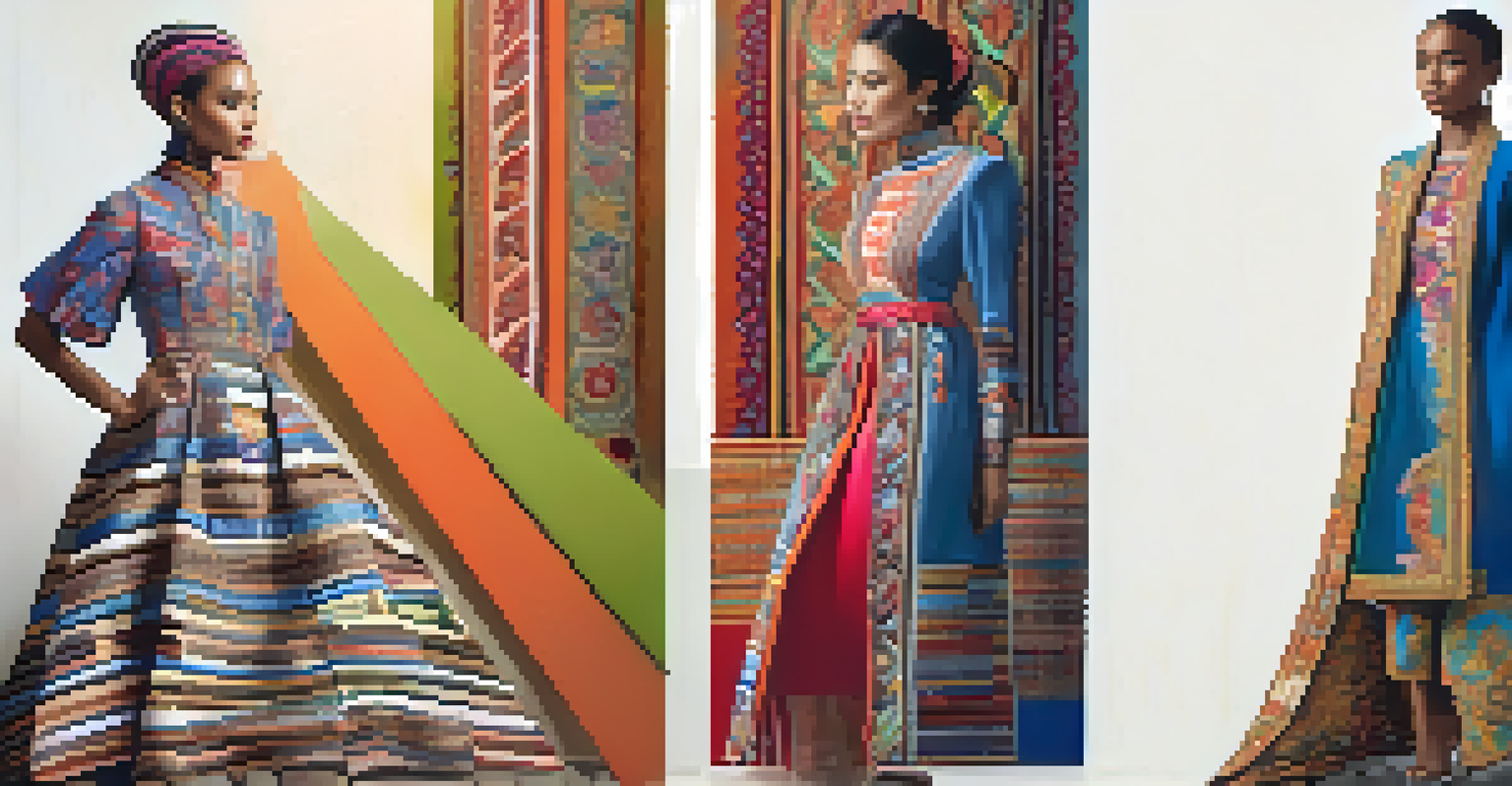Local vs Global Fashion: The Role of Digital Accessibility

Understanding Digital Accessibility in Fashion
Digital accessibility refers to the practice of making online content usable for everyone, including people with disabilities. In the fashion industry, this means ensuring that websites and e-commerce platforms are navigable for all users. Accessible design can include features like text-to-speech, keyboard navigation, and screen reader compatibility.
Inclusion is not a matter of political correctness. It is the key to growth.
As fashion moves increasingly online, the importance of digital accessibility becomes paramount. Without it, a significant portion of the audience is excluded from participating in the fashion dialogue. This not only affects sales but can also hinder brand loyalty and community engagement.
By prioritizing digital accessibility, fashion brands can reach a broader audience, allowing diverse voices to engage with their collections. This inclusivity can enrich the fashion industry, blending local styles with global trends while ensuring that no one is left behind.
The Local Fashion Scene: Trends and Accessibility
Local fashion often reflects the unique culture, traditions, and preferences of a community. This diversity can be beautifully showcased through accessible digital platforms that allow designers to share their creations with the world. When local designers have the tools to reach global audiences, they can celebrate their heritage while also appealing to broader tastes.

However, many local brands struggle with digital accessibility due to limited resources. It’s essential for these designers to have access to affordable tools and training that can help them create inclusive online experiences. By doing so, they can ensure that their stories and styles resonate with a wider audience.
Digital Accessibility Is Essential
Ensuring online content is accessible allows fashion brands to engage a wider audience, fostering inclusivity and brand loyalty.
Embracing digital accessibility not only enhances local brands' visibility but also fosters a sense of community among consumers. When people can easily access and interact with local fashion, they may develop a deeper appreciation for the artistry and craftsmanship behind each piece.
Global Fashion: The Need for Accessible Practices
Global fashion brands often have the resources to implement comprehensive digital accessibility strategies. By doing so, they can cater to a diverse customer base that spans various cultures and abilities. This approach not only enhances user experience but also strengthens brand reputation on an international scale.
Accessibility allows us to tap into the potential of every individual, transforming the way we engage with the world.
Moreover, as more consumers prioritize sustainability and ethical practices, global brands that prioritize accessibility can lead by example. They demonstrate that fashion can be inclusive, showcasing a commitment to social responsibility. As these brands make strides towards inclusivity, they inspire others in the industry to follow suit.
Ultimately, global fashion's investment in digital accessibility can create a ripple effect throughout the industry. When consumers see brands prioritizing inclusivity, they feel more empowered to engage and advocate for change across the fashion landscape.
The Intersection of Local and Global Fashion
The intersection of local and global fashion creates a vibrant tapestry of styles and stories. Digital accessibility plays a crucial role in this interplay, allowing local designers to showcase their work alongside global brands. This fusion not only enriches the fashion narrative but also offers consumers a diverse array of choices.
As local and global fashion collide, unique collaborations often emerge, showcasing the best of both worlds. Digital platforms can facilitate these partnerships, ensuring that accessibility is integrated into the creative process. This collaboration can lead to innovative designs that honor local heritage while appealing to global sensibilities.
Local Brands Need Support
Local fashion designers often lack resources for digital accessibility, highlighting the need for affordable tools and training.
By fostering an environment where local and global fashion can thrive together, the industry can broaden its horizons. This interconnectedness not only benefits brands but also empowers consumers by providing them with a richer understanding of fashion's cultural significance.
Challenges in Achieving Digital Accessibility
Despite the growing awareness of digital accessibility, many fashion brands still face significant challenges. Limited budgets, lack of expertise, and outdated technology can hinder their ability to create inclusive online experiences. These obstacles can be particularly pronounced for smaller, local brands that operate on tight margins.
Additionally, there is often a lack of understanding about what digital accessibility entails. Many brands may not realize that accessibility goes beyond just aesthetics; it encompasses user experience, navigation, and content presentation. This gap in knowledge can prevent brands from effectively reaching their full audience.
To overcome these challenges, fashion brands must prioritize learning and development in digital accessibility. Investing in training and resources can help them create more inclusive platforms, ultimately benefiting their business and the broader fashion community.
The Role of Technology in Fashion Accessibility
Technology plays a pivotal role in enhancing digital accessibility within the fashion industry. With advancements in AI and machine learning, brands can create more personalized shopping experiences that cater to diverse needs. For example, virtual fitting rooms and augmented reality can help users find their perfect fit, regardless of their abilities.
Moreover, accessible design tools are becoming increasingly available for brands of all sizes. These tools can simplify the process of making websites and content inclusive, allowing even smaller brands to compete on a global stage. As technology continues to evolve, it will pave the way for more innovative solutions in fashion accessibility.
Technology Enhances Accessibility
Advancements in technology, such as AI and virtual fitting rooms, are key to improving accessibility and customer engagement in fashion.
By embracing these technological advancements, fashion brands can not only improve their accessibility but also enhance customer engagement. When users feel seen and heard, they are more likely to become loyal customers and advocates for the brand.
Future Trends in Fashion and Digital Accessibility
As the fashion industry continues to evolve, digital accessibility will undoubtedly play a central role in shaping its future. Brands that recognize the importance of inclusivity will likely gain a competitive edge in an increasingly digital marketplace. This trend is not just about compliance; it’s about creating an enriching experience for all consumers.
Looking ahead, we can expect to see more collaborations between fashion brands and accessibility advocates. These partnerships can help drive innovation and ensure that accessibility remains at the forefront of design discussions. As these conversations take shape, they will influence everything from product design to marketing strategies.

Ultimately, the future of fashion lies in its ability to embrace diversity and inclusivity. By prioritizing digital accessibility, brands can create a more equitable industry that celebrates both local and global influences, paving the way for a vibrant and inclusive fashion landscape.